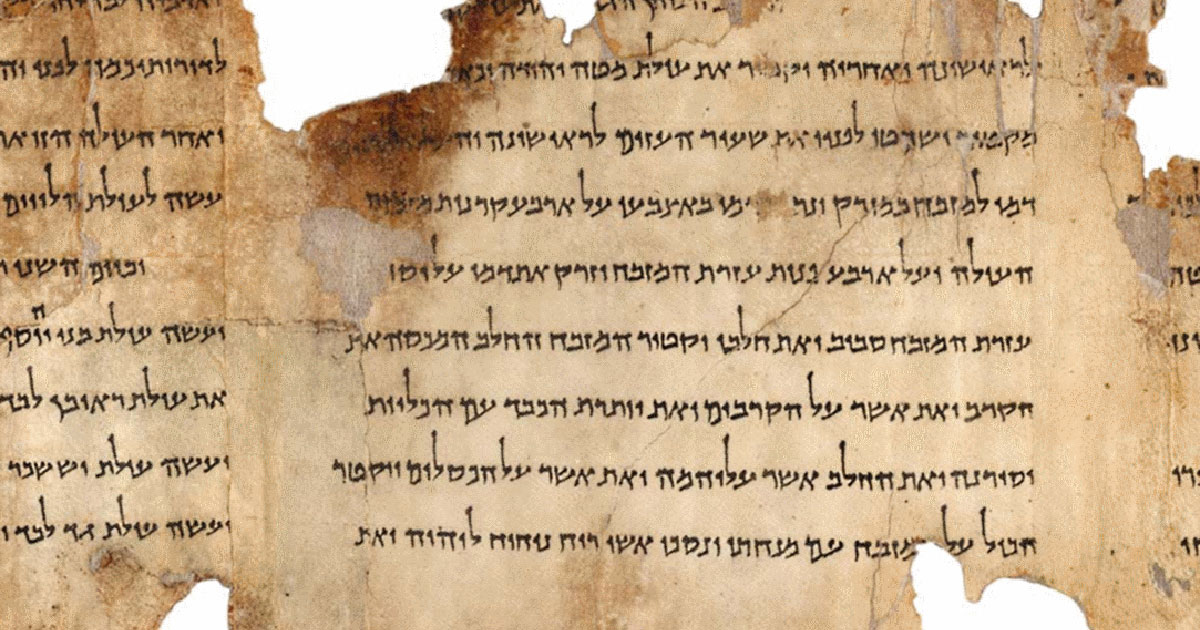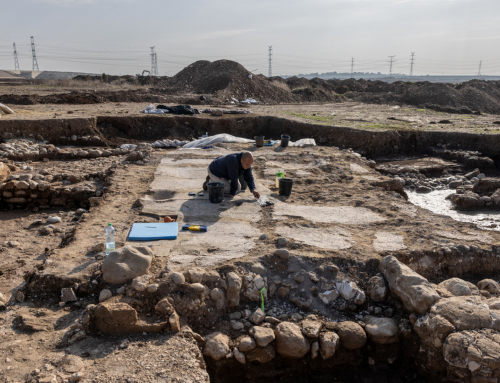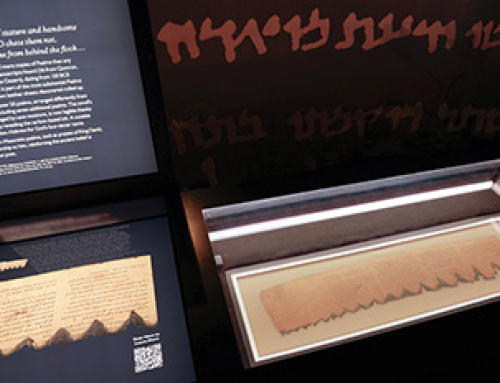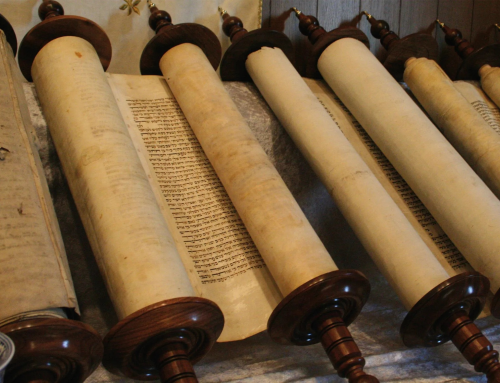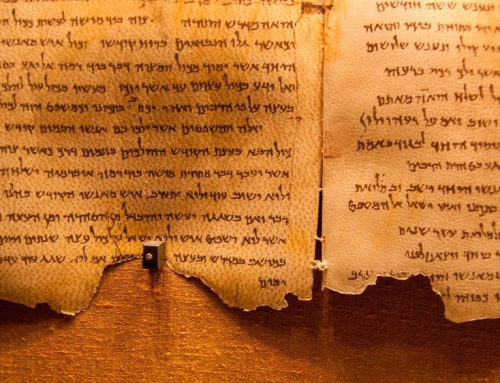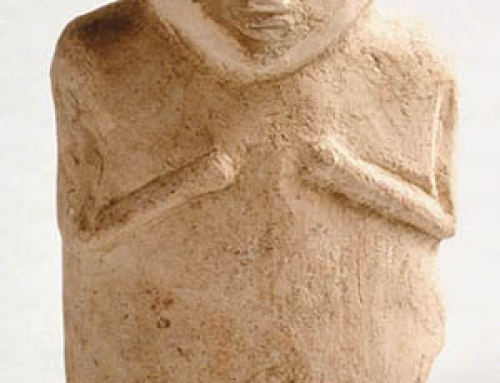In 2017 scholars Eshbal Ratson and Jonathan Ben-Dov of the Department of Bible Studies at the University of Haifa published one of the last two remaining Dead Sea Scrolls in their article “A Newly Reconstructed Calendrical Scroll from Qumran in Cryptic Script” in the Journal of Biblical Literature (Winter 2017).
For more than a year, the scholars diligently pieced together 62 Dead Sea Scroll fragments, on which there was writing in code. Ratson and Ben-Dov deciphered the code on the reconstructed scroll, called Scroll 4Q324d, and revealed that the scroll describes a 364-day calendar used by the Qumran community that lived in the Judean Desert. This Qumran calendar gives us insight into how the community organized the seasons and religious festivals, and it sheds light on scribal customs.

A portion of the recently deciphered Dead Sea Scroll 4Q324d containing a 364-day calendar used by the Qumran community in the Judean Desert. Photo: Courtesy of the University of Haifa.
The Dead Sea Scrolls—considered the greatest manuscript find of all time—were the writings of a small Jewish sect living at the site of Khirbet Qumran near the Dead Sea. Dating between 250 B.C.E. and 68 C.E., the scrolls contain both Hebrew Bible texts and texts that describe the particular beliefs and practices of this Qumran community, which called itself the Yahad (“together”).
In 1991, the Biblical Archaeology Society had a critical role in freeing the Dead Sea Scrolls from a publication logjam in which an exclusive group of scholars produced one volume on the scrolls after 20 years of study. Throughout the subsequent 20 years, a larger team of scholars published 33 additional volumes in the official Discoveries in the Judaean Desert series. In explaining what we have learned from the scrolls, Dead Sea Scroll expert Lawrence H. Schiffman wrote in BAR:
[W]e now understand much better the evolution of the authoritative Masoretic text of the Hebrew Bible and its relation to the other textual traditions (including the Greek Septuagint) that existed in Second Temple times. In the Qumran community, differing Biblical text types or textual families coexisted, apparently without conflict. An official authoritative text had not yet been finalized.
We have also come to understand the varying modes of Biblical exegesis that would later influence the authoritative texts of both Judaism and Christianity.

Tens of thousands of Dead Sea Scroll fragments were discovered in the Qumran caves near the Dead Sea. Seen here is Qumran Cave 4, where the majority of the Dead Sea Scrolls were found. Lux Moundi, CC BY 2.0 , via Wikimedia Commons.
One issue that was contested among different ancient Jewish sects was which calendar to use. While members of the Jerusalem Temple and the Hasmonean dynasty used the lunar calendar, the Qumran community used a 364-day calendar, as exemplified by Scroll 4Q324d recently published by Ratson and Ben-Dov. The scholars elaborate on the difference between the lunar calendar and the Qumran calendar in a University of Haifa press release:
The lunar calendar, which Judaism follows to this day, requires a large number of human decisions. People must look at the stars and moon and report on their observations, and someone must be empowered to decide on the new month and the application of leap years. By contrast, the 364-day calendar was perfect. Because this number can be divided into four and seven, special occasions always fall on the same day. This avoids the need to decide, for example, what happens when a particular occasion falls on the Sabbath, as often happens in the lunar calendar. The Qumran calendar is unchanging, and it appears to have embodied the beliefs of the members of this community regarding perfection and holiness.
Scroll 4Q324d describes two festivals that aren’t in the Hebrew Bible, but are known from the Dead Sea Scroll known as the Temple Scroll: the festivals of New Wine and New Oil, which follow the festival of Shavuot celebrating the New Wheat. In addition, we learn from this scroll the name of the special day the Qumran community inserted between seasons to celebrate the transition: the name is Tekufah, which today means “period” in Hebrew.
The Qumran scribes used various codes in writing the Dead Sea Scrolls, but the main code they used, which was employed in Scroll 4Q324d, was Cryptic A (named by its decipherer, Biblical scholar J.T. Milik).
“Cryptic A is a simple replacement code, with each letter represented by a designated sign,” explain Ratson and Ben-Dov in their Journal of Biblical Literature article. “Some of these signs correspond to paleo-Hebrew or Greek letters, while others seem arbitrary. These signs played a part in the sectarian scribal practice, as some of them appear as scribal marks in various scrolls.”
“The limited circulation of the cryptic script in the Yahad is useful for the study of secrecy and esotericism in that community,” Ratson and Ben-Dov conclude in their article. “It is also valuable for enriching our knowledge about other cases of cryptology in writings from antiquity, a well-known and intriguing aspect of ongoing research.”
Original Article – Deciphered Dead Sea Scroll Reveals 364-Day Calendar – Biblical Archaeology Society

